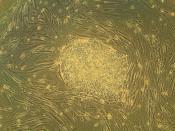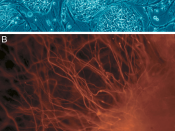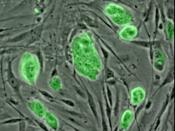How many people in the world would donate their organs if it could help save the life of another? People die everyday waiting for someone to donate the matching organ. Imagine living a life day to day not knowing if there is a future. What if, instead of waiting for someone to die, for them to receive the organ, there were organs available when needed? Many individuals are living their lives of incurable diseases, while their family and friends watch helplessly. What if, instead of watching them helplessly, they can watch them grow stronger? Is it possible? Scientists say yes, but is there a price to pay? Stem cell research, with the proper funding, and available embryonic stem cells, has the capability to cure people with life-threatening diseases and crippling disabilities.
Humans are made up of a complex system of cells. No one knows the exact number of cells in the human body.
However, we do know that the human body contains trillions of cells, and all of our activities, from running to thinking, result from the combined and coordinated responses of millions or billions of cells (Martini 68). One type of cell that is of interest is the stem cell. A stem cell is a primitive type of cell that can be coaxed into "developing into most of the 220 types of cells found in the human body" ("Medical" n. page). The two basic types of stem cells are adult stem cells and embryonic stem cells ("Medical" n. page). Adult stem cells have been found in many organs and tissues. "The adult tissues reported to contain stem cells include brain, bone marrow, peripheral blood, blood vessels, skeletal muscles, skin and liver" (Stem). Embryonic stem cells come specifically from embryos.
"All humans start from a single cell, called the zygote,


